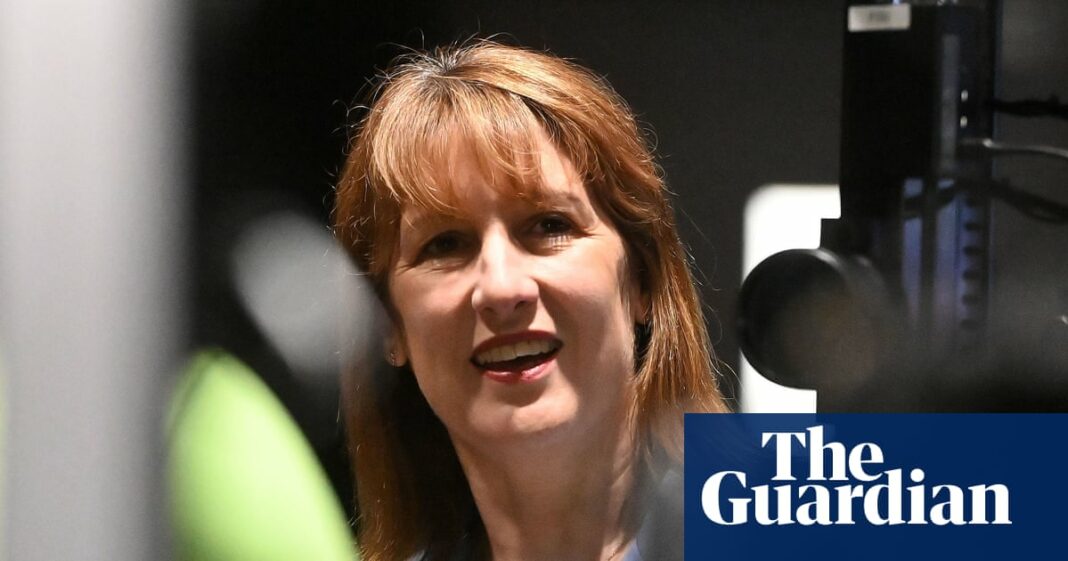The UK government borrowed less than expected in July, official figures show, in a boost to the chancellor, Rachel Reeves, as she faces pressure in the run-up to her autumn budget.
Figures from the Office for National Statistics (ONS) showed public sector net borrowing – the difference between public spending and income – fell to £1.1bn, down by £2.3bn from the same month a year earlier.
The reading was below City predictions for a deficit of £2.6bn and forecasts from the Office for Budget Responsibility (OBR) of £2.1bn.
Borrowing over the first four months of the financial year so far was £60bn. While matching the OBR’s forecasts, it was £6.7bn higher than in the same period a year earlier, and the third highest April-to-July borrowing since monthly records began.
However, the OBR said the current budget deficit – the key figure for meeting the chancellor’s self-imposed fiscal rule – was £42.8bn over the first four months, which is £5.7bn above its forecast.
Despite the better-than-expected July figure, economists said the chancellor would still face a tough autumn budget because the OBR was likely to slash its growth forecasts for the UK economy, while Labour’s series of welfare U-turns before the summer would add to borrowing.
Alex Kerr, a UK economist at the consultancy Capital Economics, said Reeves would probably need to raise between £17bn and £27bn to maintain headroom of £9.9bn against her fiscal rules.
“Ultimately, today’s release does little to brighten the gloomy outlook ahead of the budget later this year,” he said.
Ministers are understood to be exploring options to raise more money from inheritances and property taxation, the Guardian has revealed. Earlier this month the National Institute of Economic and Social Research thinktank warned the shortfall in the public finances could reach more than £40bn.
Martin Beck, the chief economist at WPI Strategy, said the latest figures would offer Reeves some relief. “Talk of a huge ‘black hole’ in the public finances is looking overstated, but the outlook is still uncomfortably tight,” he said.
Highlighting the resilience of the economy, separate figures on Thursday showed a rise in private sector business activity in August to the highest level in a year.
The latest snapshot from the S&P Global purchasing managers’ indexwhich is closely tracked by the Bank of England, showed resilience in the services sector of the economy helped the pace of economic growth to continue accelerating over the summer after a sluggish spring.
The PMI rose to 53, up from 51.5 in July, the highest level since August 2024, on a scale where 50 separates growth from contraction. However, Chris Williamson, the chief business economist at S&P Global Market Intelligence, said confidence among businesses remained “uneven and fragile”.
He said: “Companies report concerns over the impact of recent government policy changes, as well as unease emanating from broader geopolitical uncertainty. Goods exports are still falling especially sharply.”
after newsletter promotion
The ONS said the better-than-expected monthly borrowing figure reflected “strong increases” in tax receipts after Reeves’s increase in employer national insurance contributions (NICs), introduced in April.
For the financial year so far, compulsory social contributions were £9.5bn higher than in the same period a year earlier. The OBR said the tax take from employer NICs was up 24% in July from a year earlier. Overall receipts were 0.2% below its forecast for the first four months of the financial year.
The UK’s public finances are typically in a strong position in July, owing to a key payment deadline for self-assessed income tax.
However, government spending also rose sharply, as public sector pay rises and inflation-linked benefit payments raised running costs. Debt interest also increased as higher inflation pushed up the cost of servicing the UK national debt.
The ONS said public sector net debt was estimated at 96.1% of GDP, among the highest levels since the 1960s.
Economists warned rising inflation could add to the pressure on the public finances. Official figures on Wednesday showed the headline rate rose by more than expected to 3.8% in July, driven by rising food prices and companies passing on the cost of tax increases to consumers.
Darren Jones, the chief secretary to the Treasury, said: “Far too much taxpayer money is spent on interest payments for the longstanding national debt.
“That’s why we’re driving down government borrowing over the course of the parliament – so working people don’t have to foot the bill and we can invest in better schools, hospitals, and services for working families.”



